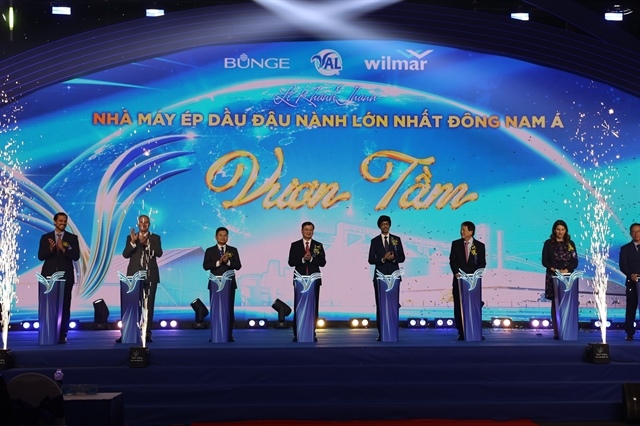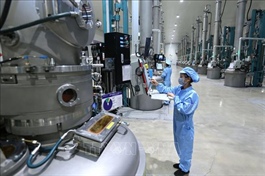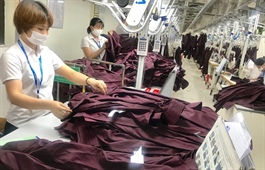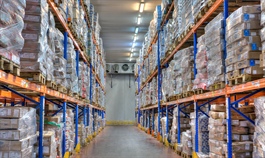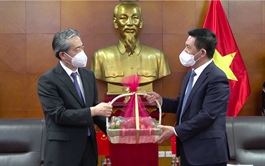Hanoi sets Industry 4.0 for sustainable development
Hanoi sets Industry 4.0 for sustainable development
The capital city will prioritize banking, transportation, e-commerce, online advertisement and tourism for its 2021-26 digital economy.
Hanoi will continue to revise its growth model and restructure the economy based on technologies and scientific achievements from the Industry 4.0, aiming to ensure rapid and sustainable development.The move was revealed in the city’s draft 5-year socio-economic plan that is currently disseminated for public consultation.
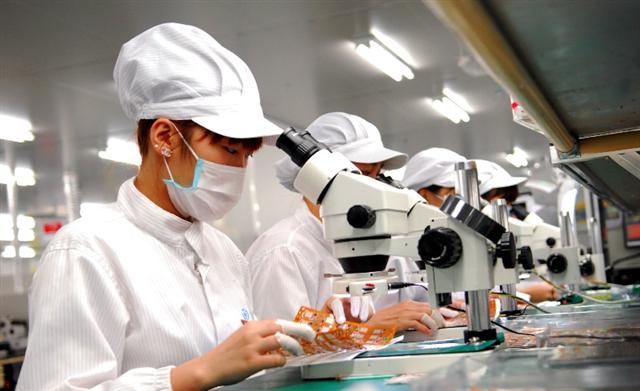
Production of electronic parts at SYNOFEX Vietnam in Quang Minh industrial park. Photo: Danh Lam
|
By 2025, Hanoi estimates the contribution of the digital economy in the gross regional domestic product (GRDP) would be around 30%, while the city’s digital infrastructure would be at the regional advanced level and digital services are widely used among the public.
For such targets to materialize, the city plans to complete the digitalization of shared databases on citizens, lands and public assets, along with the finalization of digital transformation among state administration units.
High potential sectors and fields of the digital economy would be prioritized for development, including banking, transportation, e-commerce, online advertisement, and tourism.
In this regard, the city calls for enterprises and organizations, especially those operating in such fields, to speed up modernization and hi-tech application.
In the immediate future, Hanoi would complete upgrading the Hoa Lac Hi-tech Park and start the construction of 43 new industrial clusters, half of which are set to become operational right in 2021.
Along with efforts to upgrade industrial infrastructure, Hanoi also plans to strengthen linkages among enterprises, industrial parks, and provinces/cities under the form of production chains from the early stage of research, design, production to distribution, eventually establishing large-scale industrial complexes in fields of IT, precision engineering, electronics, automation, bio-tech, new materials, and agriculture.
In a five-year time, Hanoi would have 100-120 local enterprises having their products recognized as the city’s key industrial items; 1,000 enterprises operating in supporting industries, in which 40% have a network of production and products reaching international standards and are capable to compete globally.
Regional economic hub by 2025
During the 2021-2025 period, Hanoi sets a GRDP growth target of 7.5–8%, in which the services sector would make up 65 – 65.5%, industry and services 22.5 – 23% and agro-forestry-fishery 1.4 – 1.6%.
This would translate into a GRDP per capita of VND190 million (US$8,300) by 2025 and VND830 million (US$36,000) by 2045.
The plan also sets the target for Hanoi to turn into a regional trade and economic hub by reorganizing the network of supermarkets, wholesale markets and trade centers, while developing distribution and logistics centers to provide services for local and foreign firms.
Hanoi would also call for investment in building a financial tower center, up to two major outlets, and by 2025 to have one provincial-level wholesale center, three logistics centers, 15 shopping malls, 80 super markets, and 107 traditional markets.
In 2021, Hanoi is scheduled to build three shopping malls, 10 supermarkets, 100 convenience stores, 26 markets, and 30 showrooms for products under the one commune, one product (OCOP) program.
With e-commerce fast emerging as an effective solution to boost trade in the current pandemic context, Hanoi would continue to promote modern payment methods based on new technologies, with the aim of keeping its place among two leading cities in Vietnam in terms of the E-Business Index (EBI).
In 2025, Hanoi expects revenue from business-to-customers (B2C) e-commerce to make up 10% of total retail sales and services revenue; 55% of the population shop online; non-cash payment accounts for 50% of the total number of transactions; and 70% of sales conducted via e-commerce have e-invoices.






